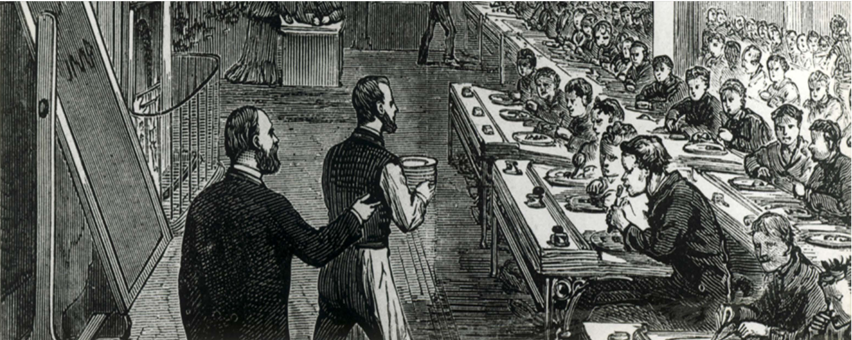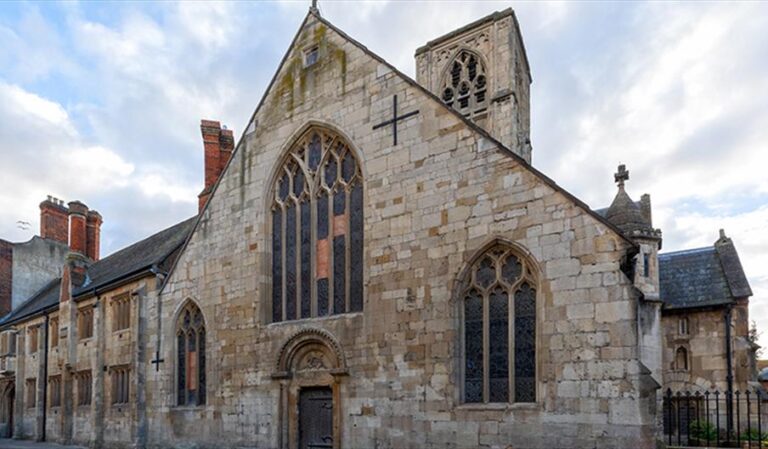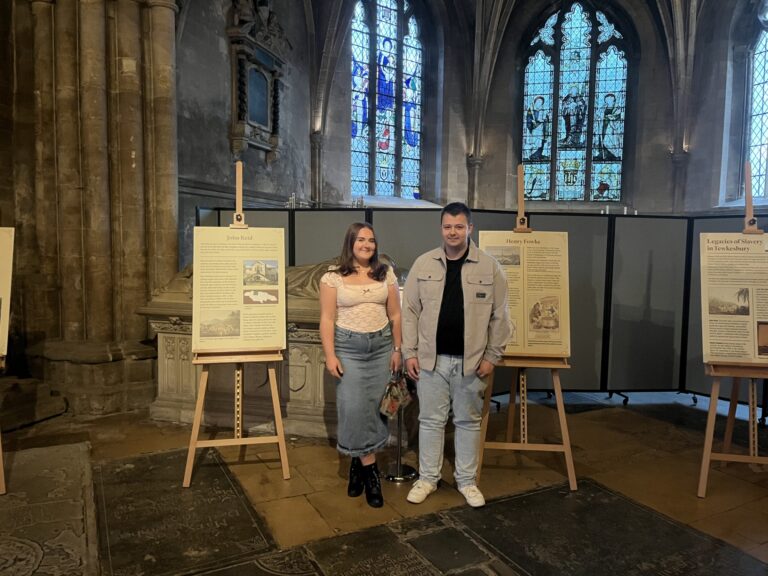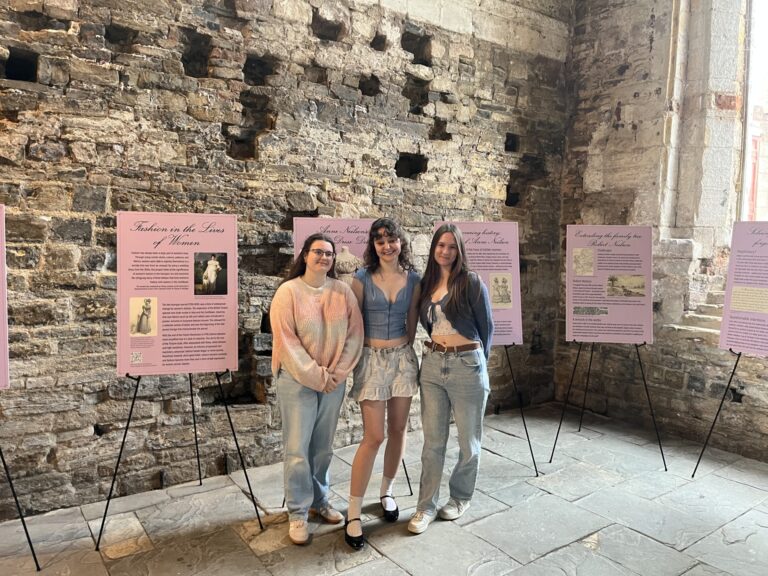| CC4HH
Cheltenham’s ragged school
This project was conducted by Charlotte Tippins and Oliwia Pawlowska.
Previous projects by the Cotswold Centre for History and Heritage have focused on the history of the Lower High Street and Cheltenham’s workhouses.
This project explores schooling in the Lower High Street area, and how the so-called ‘ragged schools, which operated across 19th century Britain, also existed in Cheltenham to provide education to poor children.
Jump to: Youth poverty in Cheltenham | Ragged schools across Britain | Educating the poor | The ‘Ragged School’ on Milsom Street
Youth poverty in cheltenham
In the late 19th century, there were 28 sites providing education to the poor of Cheltenham. The borough council also provided education for poor children up to 13 years of age.
Education provided underprivileged children with a chance of improve their lives and prospects. For many this was sorely needed: many of Cheltenham’s poorest children were born in workhouses.


After 1904, to avoid further stigma, many birth certificates hid the fact that a child was born in a workhouse. Instead, the certificate would state the name of a nearby street or building. Children born on the site of Swindon Road Workhouse were recorded as delivered at The Elms, Swindon Road.
Talking points
Cheltenham has a reputation as a ‘Regency town’:
- Were you aware of this part of its history?
- Why do you think these elements are not as widely known or discussed?
Ragged Schools across Britain

One of Britain’s largest and most famous ragged or free schools was in London and was set up for the children of Mile End.
Dr Thomas Barnardo (pictured left) opened his first free school on this site in 1867 to provide a basic education to poor children, teaching them how to read or write.
After 10 years, the institution expanded. Over the years, Barnardo’s Copperfield Road Free School provided education to tens of thousands of poor children.
On the initiative of The Ragged School Museum Trust, the school was preserved and set up as a museum in order to educate future generations about the history of free schools and the realities many poor Victorian children faced.
Educating the poor
According to L.A. Jackson, many working-class children often faced assault, and child sexual abuse became more widely recognised as a problem in 19th century Britain. Jackson emphasised the class differences evident in how children were perceived.
The romantic idea of children being born innocent and perfect, seeing them as angels, was contrasted with perceptions of juvenile delinquency: ‘pure’ children were corrupted by their working- class environment.

Providing a basic education to working-class children offered them a better chance of escaping the stigma linked with being born and growing up in the workhouses. Learning how to read and write, acquiring practical skills and trades were important in increasing the chances of these children having better prospects in their adult lives.
‘Ragged schools’ draw attention to the scale of poverty in Victorian Britain’s towns and cities.
The ‘Ragged school’ on Milsom Street
Cheltenham’s ‘ragged school’ (also known as the Industrial School) was built on Milsom Street in 1863-4 by local architect John Middleton. At the time, Milsom Street was a deprived area and criminals took up residence in the street. In 1850, two men were found in a lodging house on Milsom Street after fleeing from Wales, where they had robbed and murdered a woman.
The school was founded with the aim of providing not only education to the poor children of the Lower High Street area, but also to provide a way for working-class children to gain the skills needed to become part of the ‘respectable’ poor. Pupils were taught trades, such as sewing and home economics for the girls, woodworking and sports for the boys, as well as introducing them to reading and arithmetic.
The school not only provided education to its pupils, but also basic material comforts. Children were given a free hot lunch, especially needed as many working-class families barely survived on low incomes. The Milsom Street school became particularly known for its ability to feed its pupils.


Talking points
The school’s ability to feed its pupils was widely known and praised:
- Why was this helpful for these children and their families?
- Do you think other schools in Cheltenham did the same thing as the ragged school?
Life at the school
The original site of the ‘ragged school’ was the building on Milsom Street (now the Milsom Centre clinic), but the actual school moved several times over the years. The 1870 Elementary Education Act established Local Educational Authorities throughout England and Wales, making them responsible for maintaining schools with public money. Cheltenham authorities, however, thought that these locally funded ‘board schools’ were too radical for the town and did not form a school board at that time. It was not until the turn of the twentieth century that Cheltenham created its own LEA and the ‘ragged school’ came under public ownership.
From its inception, the school had separate wings for boys and girls, with a later co-educational space built for infants. The boys’ and girls’ wings were led by a headmaster and a headmistress. Teachers at the school were generally well-liked and respected members of the local community. No major incidents are recorded at the school that were injurious to students or staff. The school became known for the high grades students achieved and for exemplary performances in sport.
Later years
By the 1900s, the school was rundown and had reached capacity. It moved premises, with the old building in Milsom Street sometimes still used for certain classes. The 1944 Education Act put an end to the traditional 5-14 school system. Schools were divided into primary and secondary. The 1944 Act also made a distinction between different types of schools: secondary modern, grammar, and the new type of school, the technical.
After moving to new premises on Gloucester Road, the former ragged school was now known as the Central School, and still retained a few of the features of the old ragged school: school lunches were still provided to pupils free of charge.

In the 1950s, the school became the Cheltenham Technical High School. With a focus on more practical subjects, it linked back to its origins in the 1860s as the ragged school.
In 1972, the school moved to Warden Hill Road, where it remains to this day as Bournside School and Sixth Form Centre (pictured left).
This project provides Cheltenham’s community with an insight into an aspect of the town’s often overlooked history. Cheltenham has an incredibly rich and varied history.
The history of the town’s regency status is important, but the everyday lives of people who lived in Cheltenham’s less wealthy areas should also be preserved. It is important that we remember the lives of the less privileged: they are equally deserving of the respect and dignity that comes from an accurate portrayal of their past.



